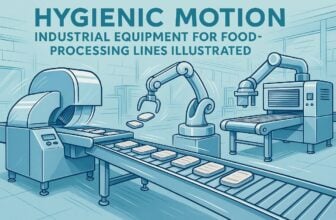Let’s face it, a happy workplace is a productive one. Employee morale isn’t just a buzzword—it’s a critical component that can make or break a business. When morale is high, productivity soars, and a positive workplace culture flourishes. This isn’t just beneficial for the company; it’s a win-win for everyone involved. Employees feel valued and motivated, leading to better performance and stronger team dynamics.
But how do we get there? Enter incentives—an often overlooked but incredibly effective tool. By providing well-thought-out incentives, companies can boost morale, inspire success, and create a vibrant, thriving work environment.
Whether it’s financial perks, recognition, or growth opportunities, the right incentives can transform the workplace into a hub of motivation and achievement. As we dive into the top incentives that spark success, let’s explore how they can elevate morale and set the stage for a flourishing workplace.
Understanding Employee Incentives
Employee incentives are benefits offered by employers to motivate and reward their workforce. These can come in various forms, each serving to boost morale and drive performance. Let’s break this down into digestible pieces:
Types of Employee Incentives:
- Financial Incentives: Bonuses, profit-sharing, and stock options directly reward employees for achieving targets or contributing to company success.
- Recognition-Based Incentives: Programs like “Employee of the Month” or public acknowledgments create a sense of appreciation and motivate employees to perform their best.
- Career Development Incentives: Opportunities for training, mentorship, and education that enable employees to grow professionally, fueling both personal and organizational success.
Psychological and Motivational Aspects:
- Incentives tap into the fundamental human desire for recognition and reward. They can transform routine tasks into goal-oriented missions, boosting engagement.
- By acknowledging achievements and providing tangible rewards, employees feel valued and motivated, enhancing job satisfaction and loyalty.
Aligning Incentives with Company Goals:
- Well-designed incentive programs are not just about rewards—they are strategic tools aligned with broader company objectives.
- By setting clear targets linked to incentives, companies ensure that employees’ personal success translates into organizational growth.
- This alignment fosters a culture of shared goals, where employees see their contribution as integral to the company’s success, boosting morale and satisfaction across the board.
Understanding and implementing effective employee incentives is a powerful way to not only encourage individual achievement but also to weave a strong, cohesive workplace culture.
Top Incentives That Inspire Success
Financial Incentives
Financial incentives are a powerful catalyst for inspiring success and motivation within the workplace. Let’s dive into how they work and why they’re effective:
Bonuses and Raises:
- Bonuses act as immediate rewards for achieving specific targets or exceeding expectations, providing a tangible acknowledgment of an employee’s hard work. This not only boosts morale but encourages continued high performance.
- Raises offer a long-term incentive, recognizing ongoing contributions and enhancing job satisfaction. By showing appreciation through salary increments, companies build loyalty and reduce turnover, ensuring that talented employees remain engaged and committed.
Profit-Sharing and Stock Options:
- Profit-Sharing creates a direct link between company performance and employee rewards. When employees know their efforts contribute to the company’s profitability, they’re more likely to take ownership of their roles and work collaboratively towards shared goals.
- Stock Options go a step further by turning employees into stakeholders. This sense of ownership fosters a deeper commitment to the company’s success, as employees’ personal financial growth is tied to the company’s performance.
Financial incentives not only drive individual achievement but also align employees’ interests with those of the company, promoting a culture of shared success and commitment. By smartly deploying these incentives, companies can create an environment where motivation and performance thrive hand in hand.
Recognition and Rewards
Recognition and rewards play a pivotal role in boosting employee morale and encouraging success. Here’s how these incentives make a difference:
Employee of the Month Programs:
- These programs spotlight individual achievements, showcasing hard work and dedication. By celebrating one standout employee each month, companies signal that exceptional efforts are valued and appreciated.
- The anticipation of being recognized fuels motivation across the team, driving everyone to put forth their best. As employees strive to earn this honor, overall performance levels rise, creating a more dynamic and committed workforce.
Public Recognition and Awards Ceremonies:
- Public recognition amplifies the impact of individual accomplishments by sharing them with the entire organization. This not only boosts the morale of the recognized employees but also sets a benchmark for peers, inspiring them to achieve similar feats.
- Awards ceremonies provide a platform to celebrate collective successes and foster a culture of appreciation. These events build a sense of community and shared goals, as employees see their contributions as part of a larger success story.
By implementing recognition and rewards programs, companies can cultivate an environment where employees feel valued and driven to excel. This sense of appreciation and acknowledgment not only enhances individual satisfaction but also strengthens the overall workplace culture.
Career Development Opportunities
Career development opportunities are a cornerstone for inspiring success and building a motivated workforce. Let’s explore how they make a significant impact:
Training Programs and Workshops:
- By offering regular training sessions and workshops, companies equip employees with new skills and knowledge, keeping them engaged and motivated. These programs provide employees with the tools they need to excel in their roles, fostering a sense of accomplishment and confidence.
- Continuous learning opportunities encourage employees to stay updated with industry trends, making them valuable assets to the company. This not only boosts individual performance but also drives innovation within the organization.
Mentorship and Career Advancement Paths:
- Mentorship programs connect employees with experienced leaders, providing guidance and support for professional growth. This personalized attention helps employees navigate their career paths, enhancing their skills and boosting their confidence.
- Clear career advancement paths empower employees to envision their future within the company, fostering loyalty and long-term commitment. When employees see a tangible path to grow and succeed, they’re more likely to invest their efforts and talents into the organization.
Career development opportunities are not just about enhancing individual capabilities—they’re about building a thriving, innovative workplace where both employees and the company grow together. By investing in these opportunities, organizations can cultivate a culture of continuous improvement and shared success.
Work-Life Balance Enhancements
Striking a balance between work and personal life is key to fostering a happy and productive workforce. Let’s delve into how these enhancements can make a world of difference:
Flexible Working Hours and Remote Work Options:
- Offering flexible hours allows employees to tailor their schedules to fit their personal needs, reducing stress and enhancing overall well-being. This flexibility helps employees manage their responsibilities both at work and home, resulting in increased productivity and job satisfaction.
- Remote work options provide an added layer of convenience, enabling employees to work from environments where they feel most comfortable and focused. This adaptability not only improves morale but also helps attract and retain top talent by accommodating diverse working styles.
Paid Time Off and Wellness Programs:
- Paid time off ensures employees have the opportunity to recharge and maintain a healthy work-life balance. By encouraging breaks and vacations, companies demonstrate their commitment to employee well-being, which in turn fosters loyalty and reduces burnout.
- Wellness programs offer resources and activities that promote physical and mental health, such as gym memberships, mindfulness sessions, and health screenings. These initiatives signal that the company values its employees’ holistic health and supports their long-term success.
These work-life balance enhancements not only enhance individual satisfaction but also contribute to the overall success of the company. By prioritizing employee well-being, organizations can build a resilient, motivated workforce that drives innovation and growth.
Unique and Creative Incentives
Incentives don’t always have to fit the traditional mold. Unique and creative approaches can powerfully impact team dynamics and employee satisfaction. Let’s explore a few innovative ideas:
Team-Building Retreats and Outings:
- Organizing retreats and outings can significantly strengthen team bonds by encouraging collaboration in a relaxed and enjoyable setting. These events break the routine, allowing employees to connect on a personal level and foster camaraderie.
- Such experiences can spark creativity and innovation as employees return to work refreshed and motivated. The shared memories from these outings contribute to a harmonious workplace culture, where teamwork and mutual support flourish.
Personalized Gifts and Experiences:
- Personalized incentives, such as tailored gifts or unique experiences, show employees that their individual contributions are recognized and valued. Whether it’s a gift card to their favorite restaurant or tickets to a concert they love, these gestures go a long way in making employees feel appreciated.
- By offering experiences rather than material rewards, companies can create lasting impressions that resonate more deeply with employees. This approach enhances engagement, as employees see their employer’s commitment to acknowledging their unique preferences and efforts.
By integrating unique and creative incentives, companies can elevate employee engagement and cultivate a positive, vibrant workplace culture. These distinctive rewards not only boost morale but also demonstrate a genuine appreciation for each individual’s role in the organization’s success.
Implementing an Effective Incentive Program
Creating a successful incentive program involves a strategic approach that aligns employee motivations with company objectives. Here’s a step-by-step guide to getting it right:
Designing a Successful Incentive Program:
- Begin by understanding what truly motivates your employees. Conduct surveys or hold focus groups to gather insights into their preferences and aspirations.
- Align incentives with your organization’s goals to ensure that rewarding employees also drive business success. Whether the aim is to boost sales or enhance customer service, the incentives should directly contribute to these outcomes.
- Clearly define the criteria for earning incentives, ensuring they are achievable and transparent. This clarity boosts motivation and keeps everyone on the same page.
Tailoring Incentives to Meet Diverse Employee Needs:
- Recognize that a one-size-fits-all approach doesn’t work for incentives. Consider the diverse needs and preferences of your workforce to ensure inclusivity and relevance.
- Offer a mix of incentives—financial and non-financial—that cater to different interests. Some employees may value flexible working arrangements, while others might be motivated by recognition or career development opportunities.
- Personalize where possible. Tailored rewards show employees their individual contributions are valued, which can significantly boost morale and engagement.
Measuring the Effectiveness of Incentive Programs:
- Gather employee feedback regularly to understand what works and what doesn’t. This can be done through surveys or informal check-ins.
- Analyze performance metrics, such as productivity levels and goal attainment, to gauge the impact of your incentive program on business outcomes.
- Monitor retention rates and employee satisfaction scores over time to assess whether your incentive strategies are contributing to a positive workplace environment.
Implementing an effective incentive program requires ongoing evaluation and adjustment. By understanding employee motivations, tailoring incentives to meet diverse needs, and measuring success through various metrics, companies can create an engaging and rewarding work environment that fosters continuous improvement and success.
Case Studies and Success Stories
Exploring real-world examples of successful incentive programs can provide valuable insights and inspiration for other organizations. Let’s delve into some standout cases and hear directly from employees who have thrived under these initiatives:
Company A: Innovative Recognition Programs:
- Company A implemented a points-based recognition system where employees could earn points for various achievements, which could then be redeemed for rewards like gift cards or extra time off. This program led to a noticeable increase in employee engagement and productivity.
- Employee Testimonial: “The recognition program at Company A has made me feel truly appreciated. Earning points for my hard work and having the freedom to choose my rewards has greatly boosted my motivation and job satisfaction.”
Company B: Flexible Work and Wellness Focus:
- By offering flexible working arrangements and comprehensive wellness programs, Company B saw a significant improvement in employee well-being and retention rates. Employees had access to yoga classes, mental health support, and the flexibility to work remotely.
- Employee Testimonial: “Having the flexibility to balance my work and personal life has been a game-changer. The wellness programs have also helped me maintain a healthier lifestyle, which has positively impacted my performance at work.”
Company C: Career Development Opportunities:
- Company C introduced mentorship programs and funded professional development courses, leading to increased employee loyalty and skill enhancement. This focus on career growth helped cultivate a highly skilled and dedicated workforce.
- Employee Testimonial: “The mentorship and training I received at Company C were instrumental in my career advancement. Knowing that the company invests in my growth has made me more committed and excited about my future here.”
These case studies highlight the transformative power of carefully designed incentive programs. By understanding the diverse needs of their workforce and implementing creative solutions, these companies have successfully fostered a motivated and satisfied team. These examples can serve as a blueprint for other organizations aiming to enhance their incentive strategies and create a thriving workplace culture.
Challenges and Considerations
Designing and implementing incentive programs can be a rewarding endeavor, but it’s not without its challenges. Let’s dive into some common pitfalls and strategies to overcome them:
Potential Pitfalls in Incentive Programs:
- One major challenge is misalignment with company goals. Incentives that don’t directly support organizational objectives can lead to wasted resources and missed opportunities for growth.
- Another issue can be a lack of engagement from employees. If incentives aren’t appealing or relevant, they might not produce the desired boost in motivation or performance.
- A one-size-fits-all approach often falls short. Without considering the diverse preferences of the workforce, incentives may inadvertently favor some employees over others.
Balancing Fairness and Inclusivity:
- It’s crucial to ensure that incentive programs are fair and inclusive. All employees should feel they have an equal opportunity to benefit from the incentives offered.
- Consider incorporating a variety of rewards—both financial and non-financial—to cater to different motivations and needs within the team.
- Transparency in how incentives are earned and awarded can prevent feelings of favoritism and promote a more cohesive team environment.
Strategies for Overcoming Challenges:
- Regularly evaluate the incentive program to ensure it remains aligned with both company objectives and employee interests. This might involve periodic reviews and adjustments based on feedback and performance metrics.
- Solicit employee feedback to gather insights into what is working and what isn’t. Engaging employees in the process can uncover areas for improvement and foster a sense of ownership and involvement.
- Consider a pilot program before full-scale implementation. Testing incentives on a smaller scale can help identify potential issues and refine the approach before a broader rollout.
By acknowledging these challenges and proactively addressing them, companies can create incentive programs that not only motivate and engage employees but also drive organizational success. With careful planning and ongoing refinement, these programs can contribute to a thriving and inclusive workplace culture.
Conclusion
Incentive programs, when thoughtfully structured, offer a multitude of benefits that can transform the workplace environment. By enhancing employee morale, boosting engagement, and driving productivity, these programs become a cornerstone of organizational success.
Enhancing Morale and Engagement:
- Well-crafted incentives make employees feel valued and appreciated, directly impacting morale.
- Engaged employees are more productive and committed, leading to higher performance and better results.
Driving Long-Term Success:
- Investing in employee morale through effective incentives cultivates a positive and thriving workplace culture.
- Organizations that prioritize their workforce’s well-being are more resilient, innovative, and poised for sustainable growth.
Continuous Evaluation and Adaptation:
- It’s crucial for companies to regularly assess and refine their incentive strategies to align with evolving employee needs and business objectives.
- By staying responsive to feedback and industry trends, businesses can ensure their programs remain relevant and effective.
In conclusion, the importance of investing in employee morale through strategic incentive programs cannot be overstated. As businesses strive for long-term success, these initiatives should be seen as essential tools for cultivating a motivated and dedicated workforce. Let’s continue to adapt and innovate, ensuring our teams feel appreciated and empowered to contribute their best every day.





